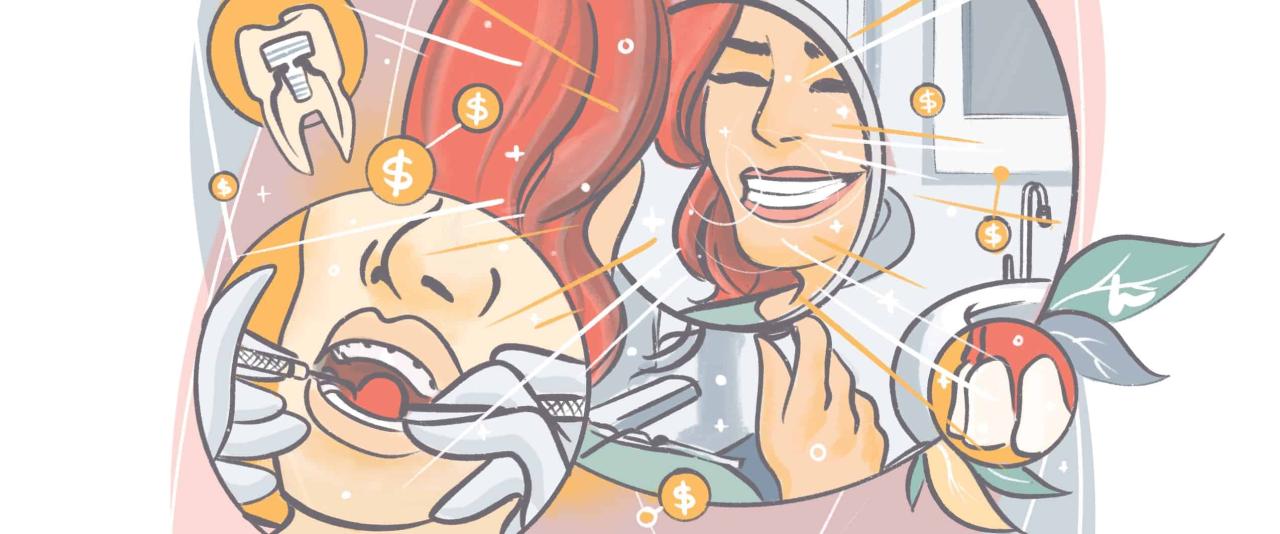Dental Insurance Coverage for Fillings
Dental insurance plans typically cover a portion of the cost of fillings, depending on the type of plan and the provider network.
Most dental insurance plans offer coverage for fillings, but the coverage rate can vary. PPO (Preferred Provider Organization) plans typically have higher coverage rates than HMO (Health Maintenance Organization) plans. In-network providers (those who have contracted with the insurance company) usually offer higher coverage rates than out-of-network providers.
Coverage Rates
The typical coverage rate for fillings under dental insurance plans is between 50% and 80%. This means that the insurance company will pay 50% to 80% of the cost of the filling, and the patient will be responsible for the remaining balance.
For example, if the cost of a filling is $100, a patient with a dental insurance plan that offers 80% coverage would pay $20 (20% of $100), and the insurance company would pay $80 (80% of $100).
Provider Networks
The coverage rate for fillings can also vary depending on the provider network. In-network providers have contracted with the insurance company to provide services at a discounted rate. As a result, patients who use in-network providers typically pay less for fillings than patients who use out-of-network providers.
For example, if the cost of a filling is $100, a patient who uses an in-network provider might pay $50 (50% of $100), while a patient who uses an out-of-network provider might pay $75 (75% of $100).
Cost of Fillings Without Insurance

The cost of fillings without insurance can vary significantly depending on the type of filling material used, the complexity of the procedure, and the location of the dental practice.
Generally, amalgam fillings are the most affordable option, followed by composite resin fillings. Gold fillings are the most expensive but also the most durable. The complexity of the procedure also affects the cost, with simple fillings being less expensive than complex fillings that require multiple visits or specialized techniques.
Factors Affecting Cost
* Type of filling material: Amalgam fillings are typically the most affordable, while gold fillings are the most expensive.
* Complexity of the procedure: Simple fillings are less expensive than complex fillings that require multiple visits or specialized techniques.
* Location of the dental practice: The cost of fillings can vary depending on the location of the dental practice, with urban areas typically having higher costs than rural areas.
Payment Options for Fillings
When it comes to paying for dental fillings, you have several payment options to consider. Each option has its own advantages and disadvantages, so it’s important to weigh them carefully before making a decision.
Cash
Paying for your fillings in cash is the most straightforward option. It’s also the most cost-effective, as you won’t have to pay any interest or fees. However, paying in cash can be a challenge if you don’t have the money on hand.
Credit Cards
Credit cards are another convenient option for paying for fillings. They allow you to spread out the cost of your treatment over time. However, you’ll need to be careful to pay off your balance in full each month to avoid paying interest.
Dental Financing Plans
Dental financing plans are a great option for people who need to finance the cost of their fillings. These plans typically offer low interest rates and flexible payment terms. However, you’ll need to make sure that you understand the terms of the plan before you sign up.
Cost Comparison: Fillings with vs. Without Insurance
Having dental insurance can significantly impact the cost of fillings. The table below compares the costs of different types of fillings with and without insurance, assuming a typical insurance coverage scenario.
| Filling Type | Cost Without Insurance | Cost with Insurance |
|---|---|---|
| Amalgam (Silver) | $50-$150 | $25-$75 |
| Composite (Tooth-Colored) | $100-$450 | $50-$225 |
| Ceramic (Porcelain) | $250-$1,500 | $125-$750 |
| Gold | $400-$2,500 | $200-$1,250 |
As the table shows, having dental insurance can result in substantial savings on the cost of fillings. For example, a composite filling that would cost $225 without insurance could cost as little as $50 with insurance. The exact amount of savings will vary depending on the type of filling and the specific insurance plan.
Factors Affecting the Cost of Fillings
The cost of fillings can vary depending on several factors, including:
Size and Location of the Cavity
- Smaller cavities generally require less filling material and are less complex to treat, resulting in a lower cost.
- Larger cavities or those located in hard-to-reach areas may require more extensive treatment, increasing the overall cost.
Type of Filling Material
- Different filling materials have varying costs and durability.
- Amalgam fillings are typically the most affordable option but may not be as aesthetically pleasing as other materials.
- Composite fillings offer a more natural appearance and are often used in visible areas, but they may be more expensive.
- Gold fillings are the most durable and expensive option, but they are less commonly used due to their high cost.
Skill and Experience of the Dentist
- The skill and experience of the dentist can also influence the cost of fillings.
- More experienced dentists may charge higher fees for their services.
- Dentists who use advanced techniques or specialize in restorative dentistry may also have higher fees.
Tips for Reducing the Cost of Fillings
Dental fillings can be a significant expense, but there are ways to reduce the cost. By following these tips, patients can save money on their dental care.
One way to reduce the cost of fillings is to compare prices between different dentists. The cost of a filling can vary significantly depending on the dentist’s location, experience, and overhead costs. Patients should get quotes from several dentists before making a decision.
Another way to save money on fillings is to negotiate a payment plan with the dentist. Many dentists are willing to work with patients to create a payment plan that fits their budget. Patients should not be afraid to ask about payment plans if they are concerned about the cost of their dental care.
Finally, patients can reduce the cost of fillings by practicing good oral hygiene to prevent cavities. Cavities are the main cause of fillings, so by preventing cavities, patients can avoid the need for fillings in the first place.
Dental Discount Plans
Dental discount plans are another way to save money on dental care. These plans offer discounts on a variety of dental services, including fillings. Patients who enroll in a dental discount plan can save up to 50% on their dental care.
Community Health Centers
Community health centers offer affordable dental care to low-income patients. These centers are typically staffed by volunteer dentists who provide dental care at a reduced cost. Patients who qualify for community health center services can save a significant amount of money on their dental care.

